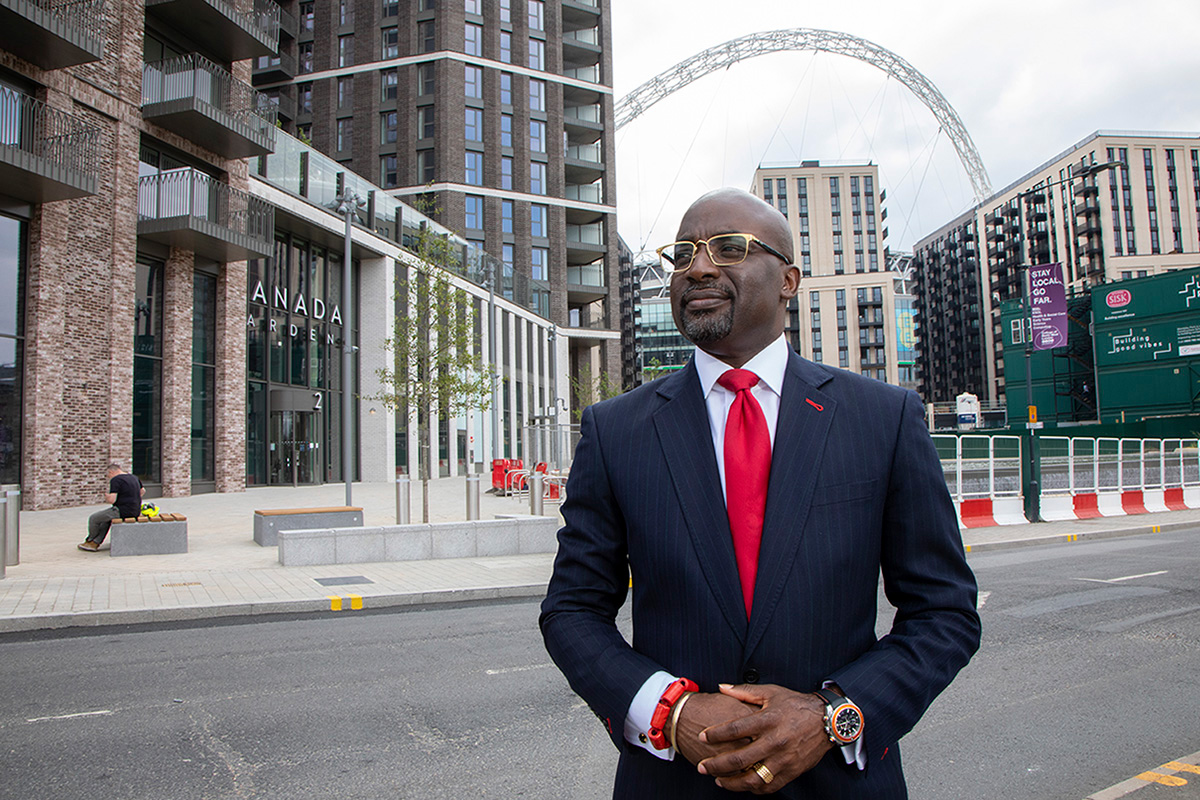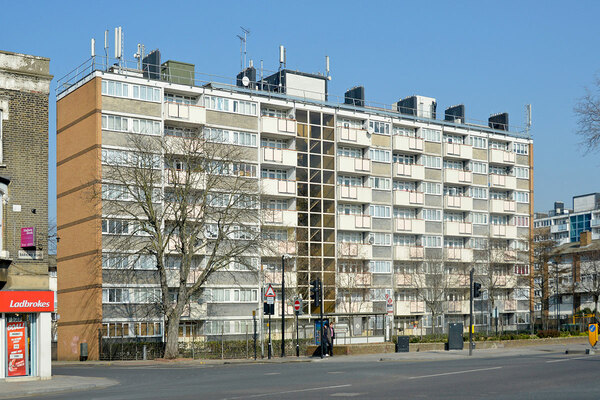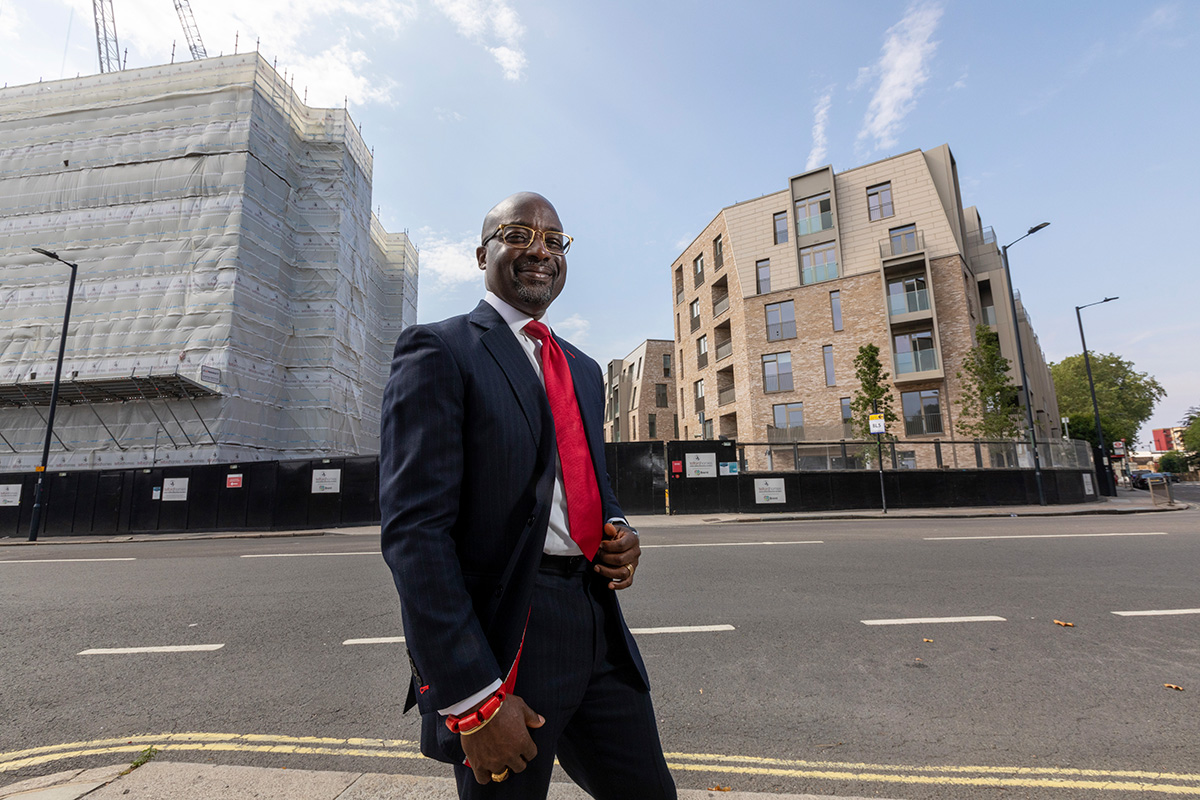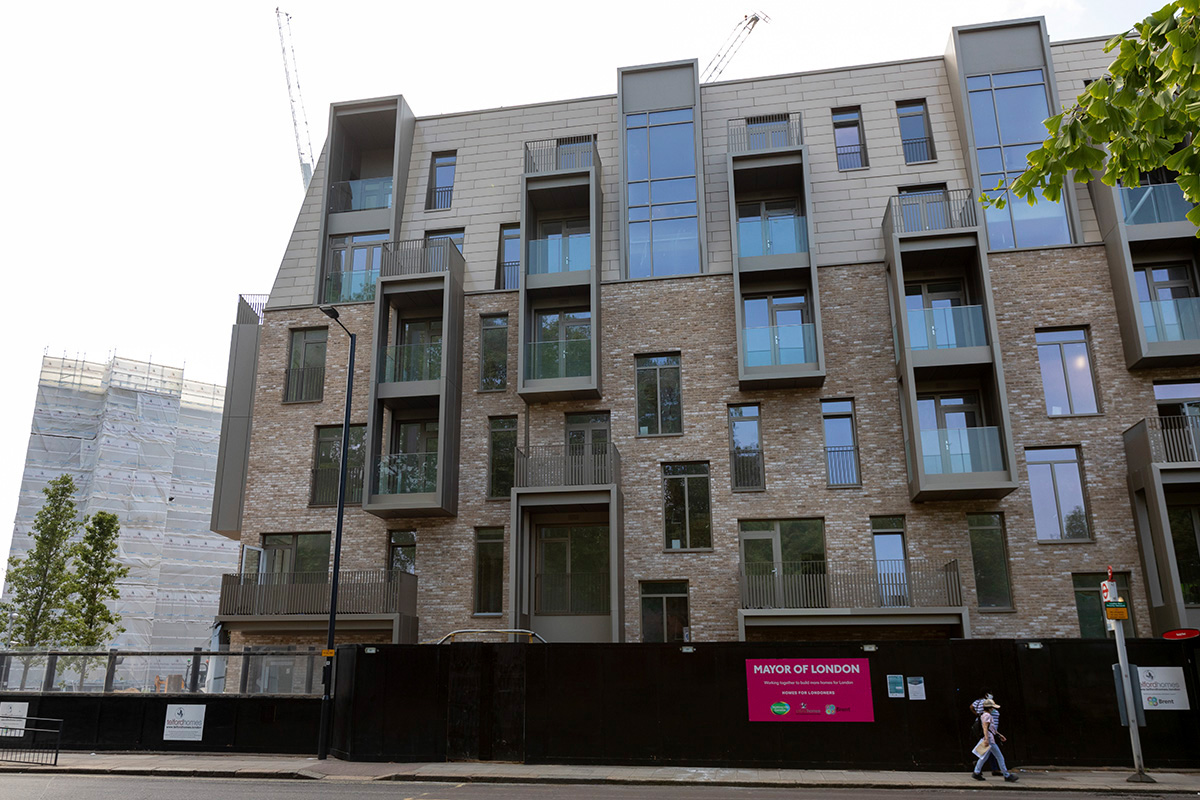You are viewing 1 of your 1 free articles
Brent Council housing boss: ‘We have been badly hit by the pandemic’
Brent has England’s highest COVID-19 death rate and a new report has found that sky-high rents are pushing many in the London borough into poverty. Hakeem Osinaike, the council’s director of housing, explains to Martin Hilditch how he is approaching the huge task of building a better future. Photography by Jonathan Goldberg
Hakeem Osinaike is momentarily flummoxed when asked how he likes to relax.
“I try to have a work/life balance – and I believe I do in my head,” he says with a laugh. “But you know that the emails never stop.”
While Mr Osinaike may spend less time on his hobbies (cycling and supporting Arsenal) than he might like, he is overseeing some of London’s most impressive housebuilding figures.
For the past two years, there have been more affordable homes started in Brent than in any other borough in London, according to the official Greater London Authority statistics – 1,650 in 2019/20 and 2,002 in 2018/19 (and you’d have to rewind more than a decade to 2009/10 to find another borough that has seen more than 2,000 affordable starts in an individual year). It has been in second place for starts at social rent or London Affordable Rent levels in each of these years, too.
While those figures are a big positive, 2020 has also shone a piercing light on the borough’s challenges. To date, Brent has suffered the highest mortality rate in England for COVID-19.
Its homes are among London’s most overcrowded – Inside Housing research has flagged a correlation between COVID-19. This week a new report by the independently chaired Brent Poverty Commission found that the high cost of housing is causing considerable hardship in the borough, with 33% of households in poverty when housing costs are taken into account (compared to 17% before they are accounted for).
An average-priced two-bedroom property in the private rented sector is £1,500 per month.
All in all, while those development numbers are impressive, Mr Osinaike and his team have much work left to do.
Inside Housing met with him shortly ahead of the publication of the poverty commission’s report to find out more about the council’s strategy and how he proposes to set about building a brighter future.
One interesting feature of Brent’s housing strategy is its growing ambition to build a large number of council homes.
It is currently looking to build at least 1,000 over five years [a significant increase for a borough with 12,500 existing council homes]. Mr Osinaike says his ambitions currently stretch way beyond this figure, however.
“Yes, we set a target of 1,000 council homes but at the moment what we have completed, what is currently on site and what is in the pipeline is far more than that,” he says.
To date, 128 new homes have been built, 447 are on site, and 443 are going through the planning system.
Mr Osinaike reckons that Brent will beat its own target by 50% even “if we didn’t do anything further”. But “we are definitely not going to stop”, he adds, suggesting that a doubling of the target – 2,000 council homes – is his aspiration. This, he thinks, will mean that Brent will be “there or thereabouts” when it comes to being the biggest council house builder in London over the next five years.
Those are the statistics, but a rather more interesting question is why the council has such significant ambitions itself. Why not simply focus on facilitating housing associations – the established delivery route for affordable housing in the borough?
This week’s report by the Brent Poverty Commission provides a couple of clues. It flags research commissioned by the council, and carried out by Cambridge Research, into affordability.
The researchers found that among social housing tenants, around 75% of all single people and couples without children cannot afford housing association social rents without support from housing benefit, compared to 50% who cannot afford the council’s rents. It found that there are no homes at all above average council rent levels that are affordable to families with two children (and 90% of families cannot afford even those council rents without help).
In its report, the poverty commission says it has “concerns about the rent levels of some new social housing, which can be considerably higher than traditional council housing rents”.
Mr Osinaike says the council’s research suggests that it needs to focus on delivering family homes and accessible housing – which other developers are unlikely to provide on the scale needed. Rent levels are another key reason for the council to step up to the plate, he says.
“Any rents that are more than 65% of the market rate, yes, it’s housing, yes, some people will have it, but it won’t be the people in our borough,” he says.
Mr Osinaike standing outside a Brent scheme in South Kilburn
The council’s housing product is “bespoke”, Mr Osinaike adds. “We are building for need, rather than building because we can.” The council’s rents for the new homes will be set below that 65% of the market figure, he says, at the London Affordable Rent level.
If all this sounds a bit “council good, housing association bad”, that is far from Mr Osinaike’s attitude. For a start, 4,000 of the 5,000 “truly affordable” homes that the council wants to see delivered come from housing associations. It also signed a development agreement with G15 association Network Homes, which is headquartered in the borough, just before the pandemic struck.
As part of the agreement, Network will act as a development agent for 345 council homes, and some development officers from Brent will work with the association on the scheme in order to help the council build its own skills base. “Basically, we are tapping into their knowledge, experience and capacity,” Mr Osinaike says.
Of immediate concern, however, is the fact that Brent sits at the top of the pile when it comes to the mortality rate from COVID-19 in England.
“We have been badly hit by the pandemic,” Mr Osinaike says. “The correlation between poverty and high death rates from COVID is quite clear. And we have got high poverty in Brent, even though we have some very rich areas. We’ve also seen that overcrowding is an issue.”
Council housing policy has been focused on reducing homelessness and the number of people living in temporary accommodation in recent years, Mr Osinaike says, with 70% of social housing allocated to people in temporary accommodation.
While this is obviously important, he says this leaves a relatively small percentage of allocations for tenants in overcrowded housing. Addressing this is now “top of our list of priorities”, Mr Osinaike states – although it is still too early to elaborate on what this response will look like.
More immediately, there is just a week to go until the end of the moratorium on evictions in England (unless the government steps in at the 11th hour). Many organisations in the housing sector have warned about a likely wave of evictions at this point. During the pandemic the number of Universal Credit (UC) applications in Brent reached a “record high” of 18,775, according to the poverty commission report – up from 13,000 households normally.
Is Mr Osinaike expecting an eviction crisis – and if so, does the council have any plans to mitigate this?
“I think it is inevitable,” he states. “Brent has the highest number of UC applications in the country. We are getting some information from the Department for Work and Pensions around those issues. So we know there is a wave that is coming.”
Gloucester and Durham, a Brent Housing development scheme in South Kilburn
The council is now “looking at how we can address those issues so that people don’t lose their homes”. That is likely to involve some direct intervention with landlords, he says – and apart from the human cost there is a real financial incentive for the council to step in early.
“If someone hasn’t paid their rent since June, that can be [arrears] in the range of £3,000-£6,000,” he states. “That is nothing when you think about the cost of putting that family in temporary accommodation.”
One option would be to instead pay off some arrears to enable people to stay in their existing homes, Mr Osinaike suggests.
“If people have been living and paying their rent prior to COVID, and they have just had a slight hiccup and they have now applied for Universal Credit and there is a gap in between but the landlord is not happy about it, we can do something about that.
“There is no point in those families losing their homes only for us to pay an incentive for another landlord to sign a different tenancy for them.”
We round off our conversation by talking about the Black Lives Matter movement. Mr Osinaike is one of the only Black housing directors in London – and only 13% of London’s housing directors come from a BAME background, meaning it is a role that is far from representative of London’s population.
Mr Osinaike says he hopes this profile interview will help encourage the many Black people working in the sector in councils and housing associations “to think they can have a career in the sector and that they shouldn’t be dissuaded by looking at the top and thinking they can’t be there”.
He says he doesn’t think the housing industry is racist but that “it doesn’t hurt for the sector to scrutinise itself and it is possible that there are people out there who recruit in their own image. That is just wrong, period. If you are a good leader you want people who will challenge you, who think differently to you. That poor leadership can lead to having more white people at senior levels, but that is poor leadership rather than racism in my view”.
There will certainly be plenty of leadership required in Brent in the months and years that lie ahead. Mr Osinaike has a big job on his hands – that work/life balance looks set to remain a tricky one.













